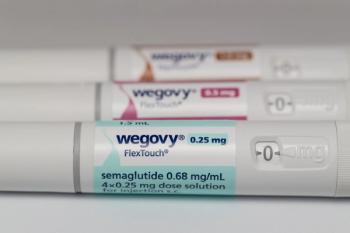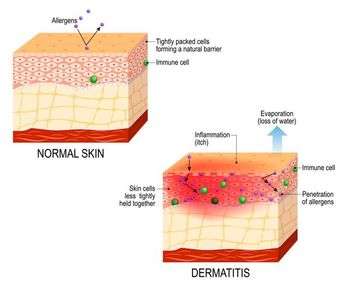
Gastric Kaposi's Sarcoma
HIV infection was diagnosed in a 34-year-old man 3 years before he was hospitalized. The patient had a 2-week history of nausea; vomiting; and diffuse, intermittent, poorly localized abdominal pain. He had received radiotherapy and chemotherapy for Kaposi's sarcoma (KS) of the upper and lower extremities, which had been diagnosed 8 months earlier.
HIV infection was diagnosed in a 34-year-old man 3 years before he was hospitalized. The patient had a 2-week history of nausea; vomiting; and diffuse, intermittent, poorly localized abdominal pain. He had received radiotherapy and chemotherapy for Kaposi's sarcoma (KS) of the upper and lower extremities, which had been diagnosed 8 months earlier.
The CD4+ count was 36/µL; HIV viral load was 45,000 copies/mL. The patient stopped taking his antiretroviral drugs and all other medications when the nausea and vomiting began. Purple macules were noted on the right lateral margin of the tongue; scaly, circumferential purple plaques were observed on the left lower leg and the left upper arm. Upper GI tract endoscopic examination revealed multiple raised purplish nodular lesions in the stomach (A and B), which are typical of gastric KS.
istopathologic examination showed fragments of gastric mucosa with superficial vascular congestion and mild chronic inflammation consistent with gastritis. Giemsa and periodic acid–Schiff stains were negative for infectious organisms.
Drs Thwe T. Htay and KoKo Aung of the Texas Tech University Health Sciences Center in Odessa report that the majority of patients with AIDS-related KS are severely immunosuppressed, with a CD4+ count below 100/µL; few affected patients have a CD4+ count of more than 200/µL. GI tract lesions can cause weight loss, abdominal pain, nausea and vomiting, upper or lower GI tract bleeding, or diarrhea in some patients; others may be asymptomatic. Biopsy may not demonstrate KS, since the lesions tend to be submucosal.1
The lesions may shrink from HAART-induced resolution of immunosuppression; however, specific therapy must be initiated as well, since the response of KS to HAART is unpredictable. Currently available treatments have limited efficacy and are associated with significant side effects. One study recommended combination therapy with bleomycin and vincristine (BV) in 2-week cycles for symptomatic GI lesions in patients with a CD4+ below 200/µL.2 Liposomal daunorubicin is an alternative for patients who cannot tolerate or do not respond to the BV regimen.
Try alpha-interferon first for those with a CD4+ above 200/µL. If the patients cannot tolerate or do not respond to alpha-interferon, give the BV regimen as an alternative.
The prognosis depends on the patient's age, CD4+ count at diagnosis, and other AIDS-defining events at AIDS diagnosis. Visceral involvement signals survival of less than 6 months.
REFERENCES:1. Friedman SL, Wright TL, Altman DF. Gastrointestinal Kaposi's sarcoma in patients with the acquired immunodeficiency syndrome: endoscopic and autopsy findings. Gastroenterology. 1985;89:102-108.
2. Kaposi's sarcoma and its management in AIDS patients: recommendations from a Scandinavian Study Group. Scand J Infect Dis. 1997;29:3-12.
Newsletter
Enhance your clinical practice with the Patient Care newsletter, offering the latest evidence-based guidelines, diagnostic insights, and treatment strategies for primary care physicians.































































































































































































































































































